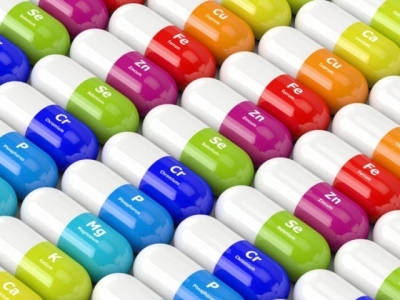How much vitamin A should silver catfish take?

Boosted vitamin A levels support growth, production of silver catfish, say researchers.
A group of researchers at the Federal University of Santa Maria in Brazil examined the use of vitamin A in the diets of juvenile silver catfish. The group published their results in the journal of Aquaculture.
“This study was conducted to evaluate the nutritional requirements, the growth response, and the hematological and oxidative parameters of juvenile silver catfish fed diets containing various levels of vitamin A,” said the researchers.
The research team found that increasing levels of dietary vitamin A improved fish growth and a better protein to fat body composition, they said.
“The 2610 and 2880 IU kg− 1 levels of vitamin A may be beneficial in reducing oxidative damage and lipid damage and improving growth,” they said. “The vitamin A level of 2610 IU kg− 1 resulted in a better fillet. Based on these results, we recommend the addition of 2610 IU kg− 1 of vitamin A to the feed of juvenile silver catfish.”
Why vitamin A?
In animal tissue there are three types of vitamin A – alcohol, aldehyde or acid, said the researchers. It is considered a nutrient with a high oxidation potential.
“In metabolic processes characterized by oxidation reactions involving electron transfer, if an imbalance in redox reactions occurs, excessive amounts of reactive oxygen species (ROS) can be produced,” they said. “This excessive production results in oxidative stress in various biological systems, damaging proteins and lipids.”
The vitamin also has gained recent attention from work on its precursors, which are thought to be important antioxidants, they said. Some vitamins are exogenous antioxidants and contribute to an animal’s antioxidant system.
However, despite the importance of vitamin A to biological systems, little work has been done exploring use role in fish production, said the researchers. Little is known about the effect of vitamin for silver catfish and feed for the species, include vitamin levels, is based on work establishing the dietary requirements for channel catfish.
Study methods
In the study, five diets were given for 10 weeks to 500 juvenile catfish, said the researchers. The diets included a control and ones with varying levels of supplemental vitamin A.
The basal diet included 37% crude protein (CP) with 3,400 kcal kg-1 of digestible energy was designed for sliver catfish, levels of vitamin A at 0, 1,500, 3,000, 4,500 or 6,000 IU kg-1 were then added, they said. The vitamin A supplement used was commercially available.
Water quality was monitored daily and pH and ammonia were noted weekly, they said.
At the end of the feeding trial, a selection of fish were collected for blood samples and all fish were checked for weight gain, condition factor (CF), specific growth rate (SGR), daily weight gain (DWG), Protein efficiency ratio (PER) and growth, said the researchers. Blood was analyzed for hematological and plasma biochemical parameters.
Several fish per diet also were collected for details on performance indices, centesimal composition and oxidative parameters, they said. These included moisture, crude protein, lipid and ash concentrations along with stress parameters.
Results
Increasing the amount of dietary vitamin A improved growth performance and weigh gain for the catfish, said the researchers.
“Weight gain and growth performance were highest for fish fed a diet containing 2880 IU kg− 1 vitamin A (LVA5), followed by 2610 IU kg− 1 vitamin A (LVA4),” they said. “Vitamin A supplementation in the diets of silver catfish affected the weight gain and growth of the fishes, as indicated by the average weight gain, the standard length and the daily growth rate, the SGR and CF and the total biomass obtained at the end of the experiment.”
Body protein deposition and protein efficiency rate also increased with level of vitamin A, they said. But, the somatic digestive index, hepatossomatic index, carcass yield, intestinal quotient and centesimal composition were not altered by diet.
The control diet, with 1090 IU kg-1, had the worse crude protein result and the diet with 2610 IU kg-1 had an improved result with less fat, said the researchers. Results were similar among the diets for erythrocyte series, erythrocyte index, plasma biochemical results and liver biochemical parameter except for alanine aminotransferase (ALT).
ALT activities were reduced in fish getting the diet with increased amounts of vitamin A, they said. Some oxidative stress biomarkers, including LPO and CAT, were reduced for fish getting a diet high in vitamin A.
Related news
 What fats offer the best response in salmon diets?
What fats offer the best response in salmon diets? Terrestrial lipids offer similar growth pattern for Atlantic salmon, say researchers. What fats offer the best response in salmon diets?
 Organic selenium use boosts farmed fish health with oxidative stress challenge
Organic selenium use boosts farmed fish health with oxidative stress challenge Long-term organic selenium supplementation may boost immune responses from farmed pacu without undermining weight gain, say researchers.
 Juvenile brown trout see benefit from veggies in diet
Juvenile brown trout see benefit from veggies in diet Plant-derived proteins can partially replace dietary fishmeal for farmed brown trout and maintain growth performance, say researchers.